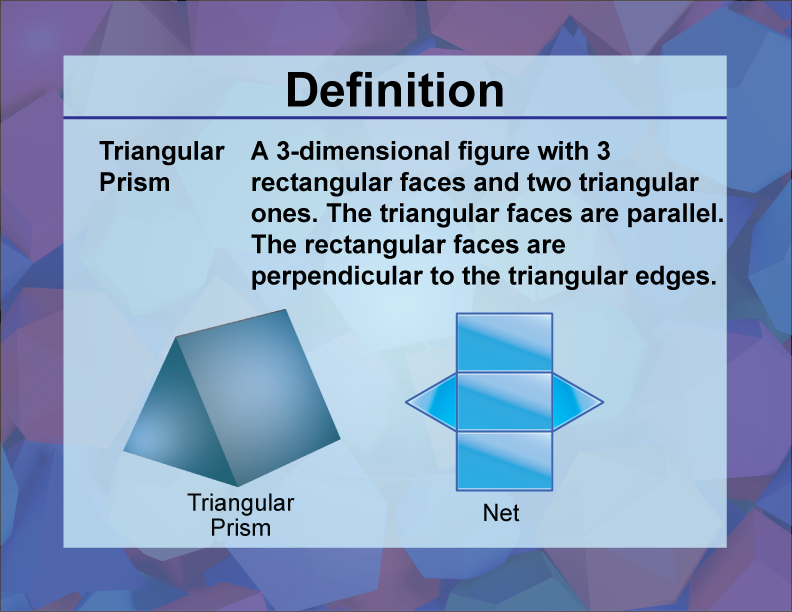
Display Title
Definition | 3D Geometry Concepts | Triangular Prism
Display Title
Triangular Prism

Topic
3D Geometry
Definition
A triangular prism is a three-dimensional geometric solid with two congruent triangular bases and three rectangular faces.
Description
The triangular prism is a fundamental shape in three-dimensional geometry, playing a crucial role in understanding the properties of polyhedra and their applications in various fields. This prism is characterized by its unique structure, consisting of two parallel triangular bases connected by three rectangular faces. The shape of the triangular bases can vary, allowing for right, equilateral, isosceles, or scalene triangular prisms.
In the study of 3D geometry, the triangular prism serves as an excellent example for exploring concepts such as surface area, volume, and spatial relationships. Its simple yet versatile form makes it ideal for introducing students to more complex three-dimensional shapes and their properties. The triangular prism is also significant in real-world applications, appearing in architecture, engineering, and product design. Its structural stability and efficient use of space make it a popular choice in construction and packaging industries.
Understanding the triangular prism is essential for developing spatial reasoning skills and laying the groundwork for more advanced topics in geometry and mathematics. By examining its properties, students can gain insights into the relationships between two-dimensional and three-dimensional shapes, as well as develop problem-solving skills related to area, volume, and geometric transformations.
For a complete collection of terms related to 3D geometry click on this link: 3D Collection.
| Common Core Standards | CCSS.MATH.CONTENT.5.MD.C.3 |
|---|---|
| Grade Range | 4 - 6 |
| Curriculum Nodes |
Geometry • 3D Geometry • Triangular Prisms |
| Copyright Year | 2013 |
| Keywords | three-dimensional geometry, 3d Geometry, defnitions, glossary term |